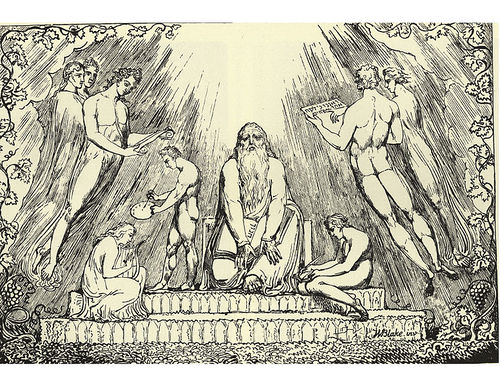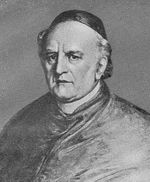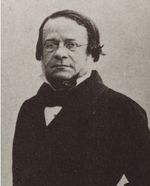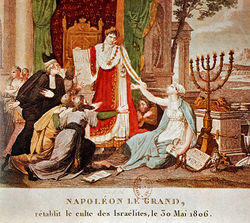Difference between revisions of "Category:Enochic Studies--1800s"
| (21 intermediate revisions by the same user not shown) | |||
| Line 4: | Line 4: | ||
{| cellpadding="2" cellspacing="5" style="width:100%; vertical-align:top; background:transparent;" | {| cellpadding="2" cellspacing="5" style="width:100%; vertical-align:top; background:transparent;" | ||
{{WindowMain | {{WindowMain | ||
|title= [[ | |title= [[Enochic Studies]] ([[1800s]]) | ||
|backgroundLogo= Bluebg_rounded_croped.png | |backgroundLogo= Bluebg_rounded_croped.png | ||
|logo= history.png | |logo= history.png | ||
|px= 38 | |||
|content= [[File:Enoch Blake.jpg|500px]] | |||
The page: '''Enochic Studies--1800s''', includes (in chronological order) scholarly and literary works in the field of Enochic Studies, made in the [[1800s|first half of the 19th century]], or between 1800 and 1849. | |||
[[File:Angelo Mai.jpg|thumb|150px|[[Angelo Mai]]]] | |||
[[File:Daniele Manin.jpg|thumb|150px|[[Daniele Manin]]]] | |||
}} | |||
{{WindowMain | |||
|title= Highlights ([[1800s]]) | |||
|backgroundLogo= Bluebg_rounded_croped.png | |||
|logo = contents.png | |||
|px= 38 | |px= 38 | ||
|content= | |content= | ||
* [[Degli Egregori (On the Watchers / 1820 Manin), book]] | |||
* [[The Book of Enoch (1821 Laurence), book]] | |||
* [[Libri Enoch prophetae versio aethiopica (1838 Laurence), book]] | |||
}} | }} | ||
{{WindowMain | {{WindowMain | ||
|title= [[ | |title= [[Interpreters]] ([[1800s]]) | ||
|backgroundLogo= Bluebg_rounded_croped.png | |backgroundLogo= Bluebg_rounded_croped.png | ||
|logo = contents.png | |logo = contents.png | ||
|px= 38 | |px= 38 | ||
|content= | |content= | ||
[[ | * [[Silvestre de Salcy]] | ||
[[ | * [[Daniele Manin]] | ||
* [[Richard Laurence]] | |||
* [[Edward Murray]] | |||
}} | |||
|} | |} | ||
|<!-- SPAZI TRA LE COLONNE --> style="border:5px solid transparent;" | | |<!-- SPAZI TRA LE COLONNE --> style="border:5px solid transparent;" | | ||
| Line 46: | Line 44: | ||
| style="width:35%; border:1px solid #a7d7f9; background:#f5faff; vertical-align:top; padding: 5px 10px 10px 8px; -moz-border-radius: 10px; -webkit-border-radius: 10px; border-radius:10px;"| | | style="width:35%; border:1px solid #a7d7f9; background:#f5faff; vertical-align:top; padding: 5px 10px 10px 8px; -moz-border-radius: 10px; -webkit-border-radius: 10px; border-radius:10px;"| | ||
{| id="mp-right" cellpadding="2" cellspacing="5" style="width:100%; vertical-align:top; background:#f5faff; background:transparent;" | {| id="mp-right" cellpadding="2" cellspacing="5" style="width:100%; vertical-align:top; background:#f5faff; background:transparent;" | ||
{{WindowMain | {{WindowMain | ||
|title= [[Timeline]] | |title= [[Timeline]] ([[1800s]]) | ||
|backgroundLogo= Bluebg_rounded_croped.png | |backgroundLogo= Bluebg_rounded_croped.png | ||
|logo= history.png | |logo= history.png | ||
|px= 38 | |px= 38 | ||
|content= | |content= [[File:1800s.jpg|thumb|left|250px]] | ||
'''''[[Enochic Studies]]''''' : [[:Category:Enochic Studies--2020s|2020s]] -- [[:Category:Enochic Studies--2010s|2010s]] -- [[:Category:Enochic Studies--2000s|2000s]] -- [[:Category:Enochic Studies--1990s|1990s]] -- [[:Category:Enochic Studies--1980s|1980s]] -- [[:Category:Enochic Studies--1970s|1970s]] -- [[:Category:Enochic Studies--1960s|1960s]] -- [[:Category:Enochic Studies--1950s|1950s]] -- [[:Category:Enochic Studies--1940s|1940s]] -- [[:Category:Enochic Studies--1930s|1930s]] -- [[:Category:Enochic Studies--1920s|1920s]] -- [[:Category:Enochic Studies--1910s|1910s]] -- [[:Category:Enochic Studies--1900s|1900s]] -- [[:Category:Enochic Studies--1850s|1850s]] -- [[:Category:Enochic Studies--1800s|1800s]] -- [[:Category:Enochic Studies--1700s|1700s]] -- [[:Category:Enochic Studies--1600s|1600s]] -- [[:Category:Enochic Studies--1500s|1500s]] -- [[:Category:Enochic Studies--1450s|1450s]] -- [[Enochic Studies|Home]] | |||
'''''[[Timeline]]''''' : [[2020s]] -- [[2010s]] -- [[2000s]] -- [[1990s]] -- [[1980s]] -- [[1970s]] -- [[1960s]] -- [[1950s]] -- [[1940s]] -- [[1930s]] -- [[1920s]] -- [[1910s]] -- [[1900s]] -- [[1850s]] -- [[1800s]] -- [[1700s]] -- [[1600s]] -- [[1500s]] -- [[1450s]] -- [[Medieval]] -- [[Timeline|Home]] | |||
}} | }} | ||
{{WindowMain | {{WindowMain | ||
|title= [[ | |title= [[Languages]] | ||
|backgroundLogo= Bluebg_rounded_croped.png | |backgroundLogo= Bluebg_rounded_croped.png | ||
|logo= contents.png | |logo= contents.png | ||
|px= 38 | |px= 38 | ||
|content | |content= [[File:Languages.jpg|thumb|left|250px]] | ||
'''[[Enochic Studies]]''' : [[:Category:Enochic Studies--English|English]] -- [[:Category:Enochic Studies--French|French]] -- [[:Category:Enochic Studies--German|German]] -- [[:Category:Enochic Studies--Italian|Italian]] -- [[:Category:Enochic Studies--Latin|Latin]] -- [[:Category:Enochic Studies--Spanish|Spanish]] -/- [[Enochic Studies|Other]] | |||
}} | }} | ||
|} | |||
|} | |||
==History of Research (1800s) -- Notes == | |||
[[Silvestre de Salcy]] was the first scholar to publish a translation (in Latin) of portions of the Paris manuscript of 1 Enoch, with notes in French (1800). His notes were translated into German in 1801 by [[Friedrich Theodor Rink]]. | |||
The "rediscovery" of the Ethiopic text deprived the Enoch Fragments of Syncellus of the centrality they had for two centuries in the early Enoch scholarship. [[Daniele Manin]]'s commentary in 1820 was the last one based on the Enoch Fragments of Syncellus; it remains a testament to two centuries of scholarship on 1 Enoch based on the available Greek, Latin, and Hebrew sources before the recovery of the Ethiopic text, and an even more impressive accomplishment when one considers that the would-be renowned Venetian patriot and statesman, and future president of the reborn Republic of Venice in 1848-49, was then barely sixteen years old. | |||
In 1821 Richard Laurence published the first English translation of the whole 1 Enoch, followed by the editio princeps of the Ethiopic text in 1838. Both works were based on the manuscript at the Bodleian Library. In 1831-33 Eduard Rüppell’s expedition to Ethiopia produced Germany’s first exemplar of the book at the Stadtbibliothek in Frankfurt am Main. Two German translations (Hoffmann, 1833-38; and Clemens, 1850) and a Latin translation (Gfrörer, 1840), contributed to make the book available to the scholarly community. | |||
In the 1820s, Angelo Mai purchased the Enoch manuscript that belonged to the Antonelli Library and made it available for study at the Vatican Library. Mai also published in 1844 a new Greek fragment of 1 Enoch he had discovered at the Vatican Library. | |||
In the 1830s and early 1840s, the character of Enoch held a prominent place in the revelations of Joseph Smith, the founder of the Latter-Day Saint movement. In the Life of Moses (6-7) Enoch is introduced as a prophet of repentance, a seer, and the builder of a city "that was called the City of Holiness, even Zion" (7:19). It was the last major development of the character of Enoch in a religious context. | |||
In Enoch Restitutus (London, 1836) the Anglican clergyman Edward Murray suggested that the now published book of Henoch should be seen only as a corrupted version of the “original” mentioned by the Letter of Jude and other ancient authors. It was the final and failed attempt to harmonize the Hermetic tradition of the antiquity of Henoch-Hermes and his writings with the new discoveries. Murray’s book was poorly received; a tradition that for centuries had been at the center of scholarly debate suddenly appeared a worthless, fanciful theory with no legitimacy in Enochic scholarship. | |||
@2014 Gabriele Boccaccini, University of Michigan | |||
== Selected Articles (1800s) == | |||
* [[Moses Stuart]]. ''Christology of the Book of Enoch, with an Account of the Book Itself, and Critical Remarks upon It''. In [[American Biblical Repository]] 3 (1840) 86-137. [A presentation of the newly discovered document to the American audience, with emphasis in the Christology of 1 Enoch]. | |||
* | * "The Apocryphal Book of Enoch," ''The Latter-day Saints' Millennial Star'', Vol. 1, No. 3 (July 1840): 61-62 | ||
* [[Samuel Davidson]]. ''Enoch'' & ''Enoch, Book of''. In [[A Cyclopaedia of Biblical Literature (1845 Kitto), edited volume]], 629-634. [Samuel Davidson was Professor of Biblical Literature and Oriental languages in the Lancashire Independent College]. | * [[Samuel Davidson]]. ''Enoch'' & ''Enoch, Book of''. In [[A Cyclopaedia of Biblical Literature (1845 Kitto), edited volume]], 629-634. [Samuel Davidson was then Professor of Biblical Literature and Oriental languages in the Lancashire Independent College]. | ||
Latest revision as of 14:33, 19 December 2019
|
The page: Enochic Studies--1800s, includes (in chronological order) scholarly and literary works in the field of Enochic Studies, made in the first half of the 19th century, or between 1800 and 1849.
|
Enochic Studies : 2020s -- 2010s -- 2000s -- 1990s -- 1980s -- 1970s -- 1960s -- 1950s -- 1940s -- 1930s -- 1920s -- 1910s -- 1900s -- 1850s -- 1800s -- 1700s -- 1600s -- 1500s -- 1450s -- Home Timeline : 2020s -- 2010s -- 2000s -- 1990s -- 1980s -- 1970s -- 1960s -- 1950s -- 1940s -- 1930s -- 1920s -- 1910s -- 1900s -- 1850s -- 1800s -- 1700s -- 1600s -- 1500s -- 1450s -- Medieval -- Home
|
History of Research (1800s) -- Notes
Silvestre de Salcy was the first scholar to publish a translation (in Latin) of portions of the Paris manuscript of 1 Enoch, with notes in French (1800). His notes were translated into German in 1801 by Friedrich Theodor Rink.
The "rediscovery" of the Ethiopic text deprived the Enoch Fragments of Syncellus of the centrality they had for two centuries in the early Enoch scholarship. Daniele Manin's commentary in 1820 was the last one based on the Enoch Fragments of Syncellus; it remains a testament to two centuries of scholarship on 1 Enoch based on the available Greek, Latin, and Hebrew sources before the recovery of the Ethiopic text, and an even more impressive accomplishment when one considers that the would-be renowned Venetian patriot and statesman, and future president of the reborn Republic of Venice in 1848-49, was then barely sixteen years old.
In 1821 Richard Laurence published the first English translation of the whole 1 Enoch, followed by the editio princeps of the Ethiopic text in 1838. Both works were based on the manuscript at the Bodleian Library. In 1831-33 Eduard Rüppell’s expedition to Ethiopia produced Germany’s first exemplar of the book at the Stadtbibliothek in Frankfurt am Main. Two German translations (Hoffmann, 1833-38; and Clemens, 1850) and a Latin translation (Gfrörer, 1840), contributed to make the book available to the scholarly community.
In the 1820s, Angelo Mai purchased the Enoch manuscript that belonged to the Antonelli Library and made it available for study at the Vatican Library. Mai also published in 1844 a new Greek fragment of 1 Enoch he had discovered at the Vatican Library.
In the 1830s and early 1840s, the character of Enoch held a prominent place in the revelations of Joseph Smith, the founder of the Latter-Day Saint movement. In the Life of Moses (6-7) Enoch is introduced as a prophet of repentance, a seer, and the builder of a city "that was called the City of Holiness, even Zion" (7:19). It was the last major development of the character of Enoch in a religious context.
In Enoch Restitutus (London, 1836) the Anglican clergyman Edward Murray suggested that the now published book of Henoch should be seen only as a corrupted version of the “original” mentioned by the Letter of Jude and other ancient authors. It was the final and failed attempt to harmonize the Hermetic tradition of the antiquity of Henoch-Hermes and his writings with the new discoveries. Murray’s book was poorly received; a tradition that for centuries had been at the center of scholarly debate suddenly appeared a worthless, fanciful theory with no legitimacy in Enochic scholarship.
@2014 Gabriele Boccaccini, University of Michigan
Selected Articles (1800s)
- Moses Stuart. Christology of the Book of Enoch, with an Account of the Book Itself, and Critical Remarks upon It. In American Biblical Repository 3 (1840) 86-137. [A presentation of the newly discovered document to the American audience, with emphasis in the Christology of 1 Enoch].
- "The Apocryphal Book of Enoch," The Latter-day Saints' Millennial Star, Vol. 1, No. 3 (July 1840): 61-62
- Samuel Davidson. Enoch & Enoch, Book of. In A Cyclopaedia of Biblical Literature (1845 Kitto), edited volume, 629-634. [Samuel Davidson was then Professor of Biblical Literature and Oriental languages in the Lancashire Independent College].
Pages in category "Enochic Studies--1800s"
The following 17 pages are in this category, out of 17 total.
1
- Notice du livre d'Énoch (Notes on the Book of Enoch / 1800 Silvestre de Sacy), book
- Nachricht das Buch Henoch betreffend = Notice du livre d'Énoch (Notes on the Book of Enoch / 1801 @1800 Silvestre de Sacy / Rink), book (German ed.)
- The Book of Enoch (1821 Laurence), book
- Georgius Syncellus et Nicephorus Cp. (1829 Dindorf), book
- Das buch Henoch in vollständiger uebersetzung mit fortlaufendem commentar (1833-1838 Hoffmann), book
- Anacalypsis (1836 Higgins), arch-fi book
- Enoch restitutus (1836 Murray), book
- Libri Enoch prophetae versio aethiopica (1838 Laurence), book
- Prophetae veteres pseudepigraphi (Ancient Prophets Pseudepigrapha / 1840 Gfrörer), book
- Christology of the Book of Enoch, with an Account of the Book Itself, and Critical Remarks upon It (1840 Stuart), essay
- Novae patrum bibliothecae (1844 Mai), book
- Enoch & Enoch, Book of (1845 Davidson), essay
Media in category "Enochic Studies--1800s"
This category contains only the following file.
- 1820 * Manin.jpg 138 × 200; 7 KB





